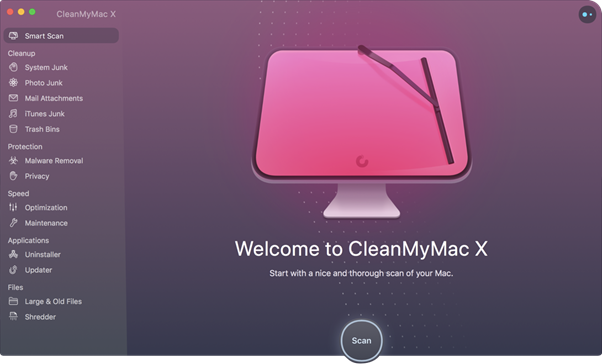How To Free Up Memory (RAM) On Your Mac
The productivity of Mac depends on the available storage space. If your system is filled with junk, it is quite common that you may lose productivity or the actual speed of your Mac. However, I have observed some users complaining that their Mac still works slowly, no matter what they do.
According to the facts, I think if you have the most powerful computer and if it is cluttered with so many apps and extensions, it will work slowly. In order to fix it, you might have to go back and clean up the mess that you have created by downloading all the apps and extensions.
By removing memory agents, you can really free up memory on your Mac. But, what are the other best ways? This blog consists of effective tips to free up space on your Mac.
Before starting, it is really important to check if your mac is really low on memory or it is facing some other issues?
Read More: Why are IT managed services Important for Businesses? | Top 5 Reasons Your AC is Blowing Warm Air
How to check if your Mac is really low on memory?
The first way to check if your mac is really low on memory is to check the speed of loading any page or requested window. If you find browser applications are crashing, you will probably receive a warning message “Your system has run out of application memory.” In order to check if your system is really low on memory, you will have to open the Activity monitor to check the memory of your Mac.
After opening the Activity monitor, here’s how to check RAM usage on your Mac:
Go to Application and type in the search bar of Activity Monitor. The presenting screen will show how much free space you have got up on your RAM of your Mac. this screen will also invoke a good old Activity monitor.
If you wish to open Activity Monitor from a shortcut, here’s the key:
Press F4 and in the search bar type “Activity Monitor”. Here are some words and their meaning to check the free up space on your Mac:
- App Memory: occupied by processes and apps
- Wired memory: occupied by apps and can’t be free for use
- Compressed: can be used by other apps as they are inactive
- Swap used: means memory used or occupied by the macOS
- Cached files: memory space you can free up and use on your Mac
Read More: 6 Things to know before updating WORDPRESS 5 : | WHAT MAKES DEALIVANA APP STAND OUT FROM THE CROWD?
1. By removing login items to reduce the Mac memory usage
Login items are nothing much but programs that load automatically whenever your Mac starts. Some of them automatically add themselves to the list and takes a lot of space on your Mac. If you are cleaning your system to free up some space, this is the first thing you should always do. To free up RAM which is occupied by login items, you will have to stop it from auto-launching.
In order to remove login items, follow the below steps:
- First of all, open System Preferences and go to Users and Groups.
- Now, click on your name (on the left).
- Now, select the tab named Login items.
- Now, you will have to check programs you don’t wish to load whenever your Mac starts.
- Click on the “-“below.
2. By freeing up disk space
Do you know that the available space on your Mac’s drive automatically converts into virtual memory? This mostly comes up when you physically run out of memory on your RAM. So, after this, your system basically relies on the hard drive in order to keep all the things moving.
The classic rule for keeping your RAM working properly is to free up at least 20% on your startup drive from your disk space. This will not only free up space but also increase the speed and productivity of your Mac.
You can try removing or deleting:
- Large unused files
- Rarely used applications
- System junk
- Old downloads
Read More: Secure Payments Online: 6 Signals for Safe Transactions | Use 5 things to extend the battery life of smartphones
3. By de-cluttering your desktop
This might sound like the basic tip for freeing up space on your Mac. But, this tip is quite effective. Keeping your system clean keeps your system productive and speedy. And, the fact is that Mac is designed in such a way that they treat icons of desktop as little active windows.
Therefore, the more the icons, the heavier the memory use will be. Hence, there is a need to remove all the memory resources to keep your desktop clean.
4. By clearing cache files
The other best way to free up storage space (RAM) on your Mac is to clear cache files from time to time. They are tiny files that take a lot of space on your mac, by removing them on a regular basis; you can help your Mac increase productivity. And, this tip is also effective for avoiding system issues on your Mac. In order to remove or delete cache files on your Mac, follow the below steps:
- Open Finder.
- Go to the Go menu, select the “Go to” folder from the screen.
- Now, type “~/Library/Caches/” in the field and select go.
- From the window, you will be able to see all the cache files
- Now, you will have to press “Command+A” for selecting all the files. Or, you can also delete or remove them one by one.
- After selecting the cache files, you will have to enter your username and password to confirm the action.
- Now, go to the bin and empty it.
Read More: How is AI having an impact on people from all walks of life? | 7 Reasons Why You Should Invest in IT Support
Brownie Tips
Below are some extra tips to free up memory on your Mac:
- By replacing AdBlock with a lighter extension.
- Keep fewer opened tabs while working on your Mac.
- Keep restarting your Mac to free up space on RA<.
- ● By closing all the hung-up print queues.
- By closing Finder windows.
- By managing RAM with a third-party tool like CleanMyMac X
- By tuning up your Chrome’s task manager to keep your Mac productive and speedy.
I hope this blog helps you to free up memory on your Mac.
Thanks for reading!










